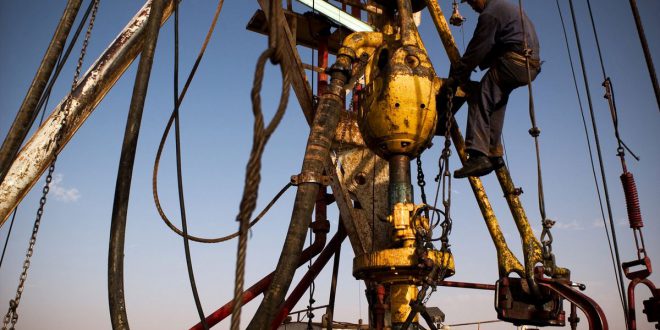OPEC and its allies will not just have oil demand concerns to digest when they meet in Vienna this week. They will also be closely following the situation in fellow member Libya, whose production has been almost decimated by the civil war in the country, where oil has increasingly been used as a weapon.
The 23-country producer coalition, dubbed OPEC+, is on the verge of undertaking hefty production cuts to neutralize the sharp fall in demand brought about by the COVID-19 virus outbreak.
Sources have told S&P Global Platts that OPEC is concerned that the return of Libyan crude to the market would thwart its future production strategy.
“There may be a discussion about what to do in response to Libya [at the meeting],” said one source privy to discussions between OPEC delegates on Libya.
He added that he would not be surprised if discussions are not just about the virus at the OPEC meeting, with Libya emerging as one of the main topics.
The removal of more than 1 million b/d of Libyan oil from the market since mid-January has barely had an impact on oil prices, which have in fact crashed by almost 25% on fears that COVID-19 could substantially reduce oil demand this year.
Wary of Libya return
Indeed, any deepening of the coalition’s production cuts could be undone by the return of Libya’s oil — reduced by around 1 million b/d at present by blockades at the country’s key oil terminals.
“OPEC will be in a soup if they decide to cut around 1 million b/d more and then a few weeks later 1 million b/d of Libya’s production comes back,” said another source, emphasizing that this lost output could come back online relatively swiftly.
Sources also said that the international community has not put enough pressure on Khalifa Haftar’s Libyan National Army, which has orchestrated the oil blockade, to reopen the country’s terminals.
Some of Haftar’s key allies are Russia, the UAE and Saudi Arabia, which are part of the OPEC+ coalition.
Haftar’s plans of effectively switching off Libya’s oil actually aligns somewhat with the OPEC+ strategy to prop up oil prices, according to Hamish Kinnear, an analyst at Verisk Maplecroft.
“With COVID-19 hitting oil demand, Saudi-UAE pushing for production cuts and US disinterest in conflict resolution, I don’t think that the oil blockade is ending anytime soon (until early April at least),” Kinnear said.
“Saudi is pushing for 1 million b/d in cuts, and if the Libyan taps were turned back on this would be wiped out,” he added.
The chairman of Libya’s National Oil Corporation, Mustafa Sanalla, has surprisingly not been in favor of deeper production cuts.
Speaking to reporters in Vienna, Sanalla said there is no need to cut further, with 1 million b/d of the country’s crude already off the market.
Most analysts have said OPEC+ needs Libyan oil to be offline for the first half of this year for the deeper cuts to have substantive effects, as this would help keep global stockpiles low.
Downward spiral
Libya’s crude production, as high as 1.22 million b/d before the latest blockade, has plummeted to 120,000 b/d in the past week — the lowest level since late-2011, when a civil war tore the country apart and led to the downfall of Moammar Qadhafi.
According to state-owned NOC, output could fall even further to just 72,000 b/d in the coming days, with exports already limited to only offshore terminals.
Sanalla said Tuesday that Libya was currently producing around 121,000-123,000 b/d because of the blockade
Since January 18, east Libyan tribesmen — supported by Haftar — have orchestrated an oil port blockade, slashing the country’s oil output.
Haftar controls the bulk of Libya’s key oil infrastructure, but does not have access to its oil revenues, which are handled by the Central Bank of Libya. By holding the ports hostage, he is hoping to starve off revenues to the UN-backed Government of National Accord, allowing him to capture Tripoli and other parts of western Libya.
But with the chances of LNA and GNA agreeing a wider political agreement looking doubtful, most analysts do not expect Libyan oil to return to the market very soon.
“A resumption hinges on a fair distribution of proceeds from oil and gas exports, which in turn depends on how things evolve on the military front,” said Iliasse Sdiqui, associate director at Whispering Bell, a risk management company covering Libya. “A return to full-blown military escalation is likely in the medium term. The narrative developing on the ground is gradually moving towards escalation. ”
“In Libya, a political resolution remains elusive in the near term, as the recent intensification of battles near Tripoli could be extended, weighing on oil export recovery prospects,” Barclays said in an analyst note.
Sanalla, however, has chosen to remain optimistic that a deal to reopen the oil terminals could be reached soon.
“I can say we are working very hard with all parties inside and outside. We try to mitigate that and I think we’re always optimistic,” he said. “And I’m sure that we are going to reach [1 million b/d] very soon and have no technical problem…We can get back to 1 million b/d within days [once production restarts],” he added.
In the end, it will all come down to timing. OPEC and its allies, will be hoping that Libya’s oil production will not rebound just as it decides to further slash its output.

 Iran Energy News Oil, Gas, Petrochemical and Energy Field Specialized Channel
Iran Energy News Oil, Gas, Petrochemical and Energy Field Specialized Channel



